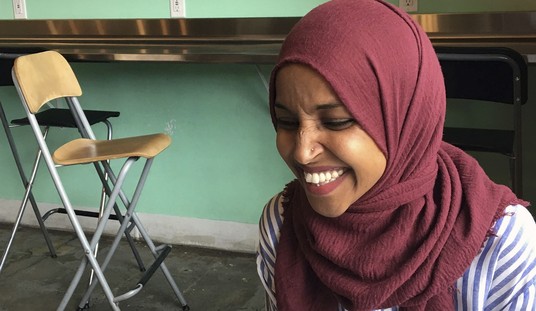Scientists guesstimate that the time from infection to the onset of symptoms is a week or so, with another week before serious symptoms begin to manifest. The protests have been going on nationally since late May. Remember when that CNN anchor got arrested by Minneapolis PD while he and his crew were trying to cover the protests? That was May 29. Remember when the mayor of Atlanta went viral for her impromptu comments denouncing rioting in her city? That was May 30. We’re more than two and half weeks on from that.
Where are all the new infections?
To be clear, cases *are* up lately in the U.S…
States reported almost 24k new cases.
The 7-day average has now risen for 8 days in a row. The regional dynamics are driving the trend. pic.twitter.com/baEFoszStZ
— The COVID Tracking Project (@COVID19Tracking) June 17, 2020
…but that comes with two big caveats. First, the positivity rate is flat, which means there’s no evidence of a national outbreak of the sort you’d logically expect from nationwide protests. And second, given that protests in major cities tend to be larger, we’d expect to see sizable outbreaks in those cities — if in fact the demonstrations are vectors of transmissions.
We’re not seeing it, says Fred Kaplan of Slate.
When tens of thousands of people hit the streets protesting the police killing of George Floyd, many worried that the crowds—often too dense to allow the recommended 6 feet of social distancing—would spark a new wave of COVID-19 cases. Yet in New York, city and state officials tell me, there have been no spikes of the illness.
Nor have there been sudden surges in several other cities where large demonstrations were held, including Minneapolis, where Floyd was killed and the first protests erupted, and Philadelphia. Spikes have occurred elsewhere—especially Texas, Arizona, Florida, and California—but they coincided with the reopening of bars, restaurants, and other indoor establishments, making it hard to trace the upticks to the protests.
The absence of surges in the cities with massive demonstrations but few other large gatherings has taken many officials and health analysts by surprise. However, as they’ve examined the data and the video footage, one thing has clarified matters, to an extent: A large percentage of the protesters wore masks.
Cases in New York City and in Minnesota are mercifully small right now despite the heavy protest activity in both places. Kaplan spoke with a researcher at Columbia whose team put together a computer model of how infectious a large outdoor crowd might be assuming different variables related to size, mask-wearing, and so on. They modeled three scenarios; in the worst case there was a large number of new infections afterward, in the best case there was no meaningful uptick. We’re seeing no meaningful uptick right now. Whether that’s because the protesters are wearing masks in sufficient numbers to suppress the spread or for some other reason is unclear. It could be that the protesters are young enough on average that they’re having little trouble fighting off the virus even when they do get infected. Or it could be that many protesters are declining to be tested for whatever reason and thus that there’s a lot of “hidden infection” out there that we’re not detecting, which would be really bad.
But as far as anyone can tell, we’re in the best-case scenario here. If, by the end of the month, we haven’t seen a national spike in hospitalizations or deaths, we can safely conclude that the protests were much safer than everyone feared. Which has major implications for other mass gatherings outdoors.
Why are we seeing more cases nationally but not more deaths, though? I spitballed some theories yesterday. Nate Silver pointed out today that there’s evidence lately that infections are trending younger, which would explain why more people are surviving them:
There is increasing evidence that new cases tend to be younger than the ones in March/April, possibly essential workers or people returning to work or social activity after lockdowns. That helps to explain the seeming incongruity between deaths and cases.https://t.co/CX8mqopC3p
— Nate Silver (@NateSilver538) June 17, 2020
Senior citizens may have resigned themselves to essentially indefinite quarantine, feeling grateful to have survived the first wave and not wanting to take chances, whereas the young are taking advantage of their lower risk to be more adventurous. That may help explain the regional effect we’re seeing right now too, with cases falling off a cliff in the hard-hit northeast while rising ominously in the less-impacted south. The south is on an accelerated timetable for reopening relative to the northeast and more commercial activity by younger consumers naturally means more infections:
I made a chart. On average, blue states have seen steadily declining coronavirus infections since mid-April. On average, red states have… not. pic.twitter.com/6AuYriU3Ek
— Timothy B. Lee (@binarybits) June 17, 2020
Silver suggests another possibility: What if infections are up in the south because it’s hotter there? That seems counterintuitive, as warmer weather is supposed to reduce transmission, but summer in the south is so oppressive that it ends up driving people indoors. It’s northerners who are enjoying the sunshine right now. Southerners are cooling off in enclosed spaces.
I don’t know. Maybe we as Americans are just worse at suppressing the virus generally than other western nations are:
The population of the US is 330 million
The population of the EU is 446 million[source https://t.co/JtQgQFMvj9] pic.twitter.com/DAVWfkIW15
— Max Roser (@MaxCRoser) June 16, 2020
Here’s a CNN interview from last night featuring three members from a group of 16 friends who decided to celebrate the end of lockdown at a local bar where they live in Florida and … it did not go well. Exit quotation about the “growing consensus” on how the virus is transmitted: “[T]he major culprit is close-up, person-to-person interactions for extended periods. Crowded events, poorly ventilated areas and places where people are talking loudly—or singing, in one famous case—maximize the risk.”







